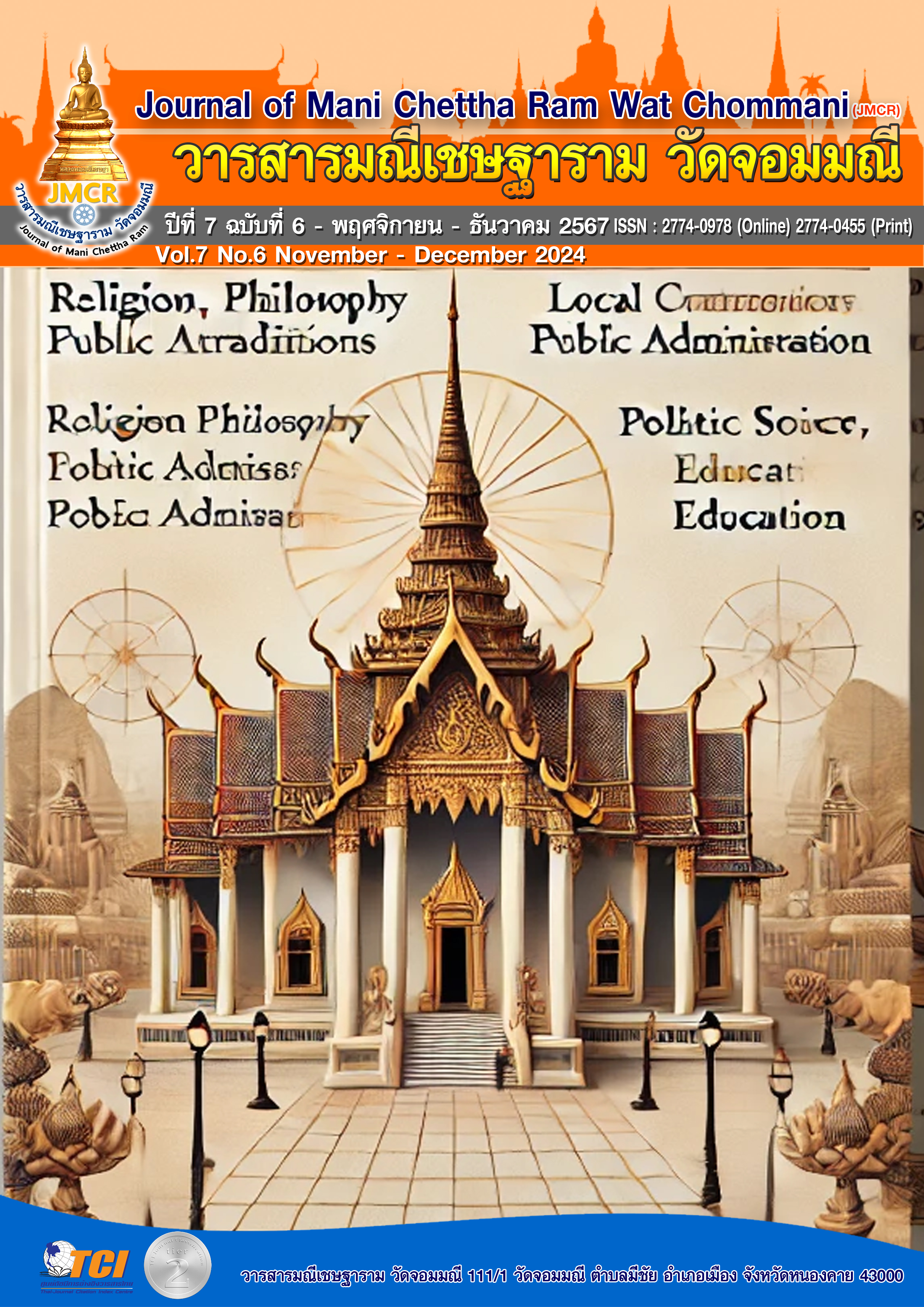THE ROLE OF SCHOOL ADMINISTRATORS IN THE 21ST CENTURY AFFECTING ACTIVE LEARNING MANAGEMENT IN SCHOOLS UNDER THE SECONDARY EDUCATIONAL SERVICE AREA OFFICE, LOEI – NONG BUA LAMPHU
Keywords:
Role of school administrators, The 21st Century, Active LearningAbstract
The objectives of this research were: 1) to study the level of roles of school administrators in the 21st century, 2) to study the level of active learning management in schools, 3) the relationship between school administrators' roles in the 21st century and active learning management in schools, and 4) the impact of school administrators' 21st century roles on active learning management in schools under the Secondary Educational Service Area Office Loei-Nongbua Lamphu. The sample consisted of 324 teachers and educational personnel in schools under the Secondary Educational Service Area Office Loei-Nongbua Lamphu, obtained through multi-stage random sampling. The research instrument was a 5-level rating scale questionnaire with a reliability coefficient of 0.78. Statistics used for data analysis included frequency, percentage, mean, standard deviation, Pearson's correlation coefficient, and stepwise multiple regression analysis.
The research findings were:
1) The overall and individual aspects of school administrators' roles in the 21st century were at a high level
2) The overall and individual aspects of active learning management in schools were at a high level
3) There was a moderate positive correlation between school administrators' 21st century roles and active learning management in schools (rxy = 0.666), with statistical significance at the .01 level
4) School administrators' 21st century roles affected active learning management in schools under the Secondary Educational Service Area Office Loei-Nongbua Lamphu, with a predictive power of 50%, statistically significant at the .01 level
The raw score prediction equation was:
Y = -1.979 + 0.632(X4) + 0.471(X3) + 0.343(X1)
The standardized score prediction equation was:
Z = 0.415(X4) + 0.216(X3) + 0.193(X1)
References
ทิศนา แขมมณี. (2561). ศาสตร์การสอน: องค์ความรู้เพื่อการจัดกระบวนการเรียนรู้ที่มี ประสิทธิภาพ. กรุงเทพมหานคร: สำนักพิมพ์แห่งจุฬาลงกรณ์มหาวิทยาลัย.
บุญชม ศรีสะอาด. (2556). การวิจัยเบื้องต้น. (พิมพ์ครั้งที่ 9). กรุงเทพมหานคร: สุวีริยาสาส์น.
ไพฑูรย์ สินลารัตน์. (2559). การจัดการเรียนรู้แบบใหม่ในระดับอุดมศึกษา. กรุงเทพมหานคร:มหาวิทยาลัยธุรกิจบัณฑิตย์.
วสิษฐ์พล รอบจังหวัด. (2566). บทบาทของผู้บริหารสถานศึกษากับการปฏิบัติงานของครูใน โรงเรียนสังกัดสำนักงานเขตพื้นที่การศึกษามัธยมศึกษา เขต 8. วารสารวิทยาการจัดการ มหาวิทยาลัยราชภัฏนครปฐม, 10(1), 89-102.
วิจารณ์ พานิช. (2560). การเรียนรู้เชิงรุกสำหรับศตวรรษที่ 21. กรุงเทพมหานคร: มูลนิธิสยามกัมมาจล.
วิจารณ์ พานิช. (2562). การศึกษาไทยในยุคดิจิทัล. กรุงเทพมหานคร: มูลนิธิสยามกัมมาจล.
สมหมาย อ่ำดอนกลอย. (2559). การบริหารการศึกษาในยุคดิจิทัล. วารสารศึกษาศาสตร์ มหาวิทยาลัยนเรศวร, 18(2), 1-14.
สำนักงานเขตพื้นที่การศึกษามัธยมศึกษาเลย หนองบัวลำภู. (2566). ข้อมูลสารสนเทศทางการศึกษา. กรุงเทพมหานคร: สำนักงานคณะกรรมการการศึกษาขั้นพื้นฐาน.
สุเทพ พงศ์ศรีวัฒน์. (2558). ภาวะผู้นำทางการศึกษา. วารสารวิชาการ มหาวิทยาลัยราชภัฏ เชียงราย, 10(2), 1-15.
Bonwell, C. C., & Eison, J. A. (2019). Active learning: Creating excitement in the classroom. Jossey-Bass Publishers.
Krejcie, R. V., & Morgan, D. W. (1970). Determining sample size for research activities. Educational and Psychological Measurement, 30(3), 607-610.
Michael, J., & Modell, H. I. (2020). Active learning in secondary and college science classrooms: A working model for helping the learner to learn. Cambridge University Press.
Prince, M. (2018). Does active learning work? A review of the research. Journal of Engineering Education, 93(3), 223-231.


